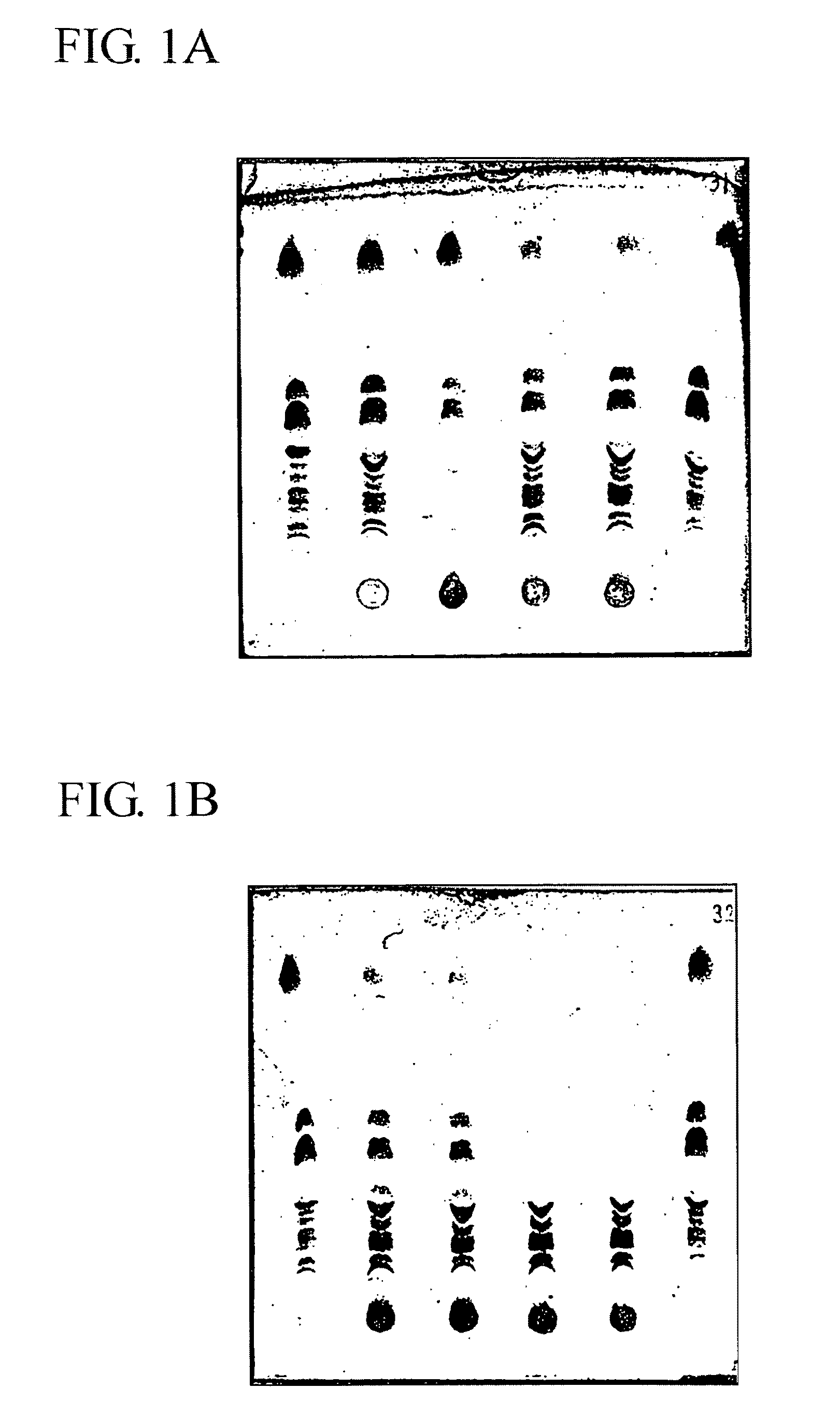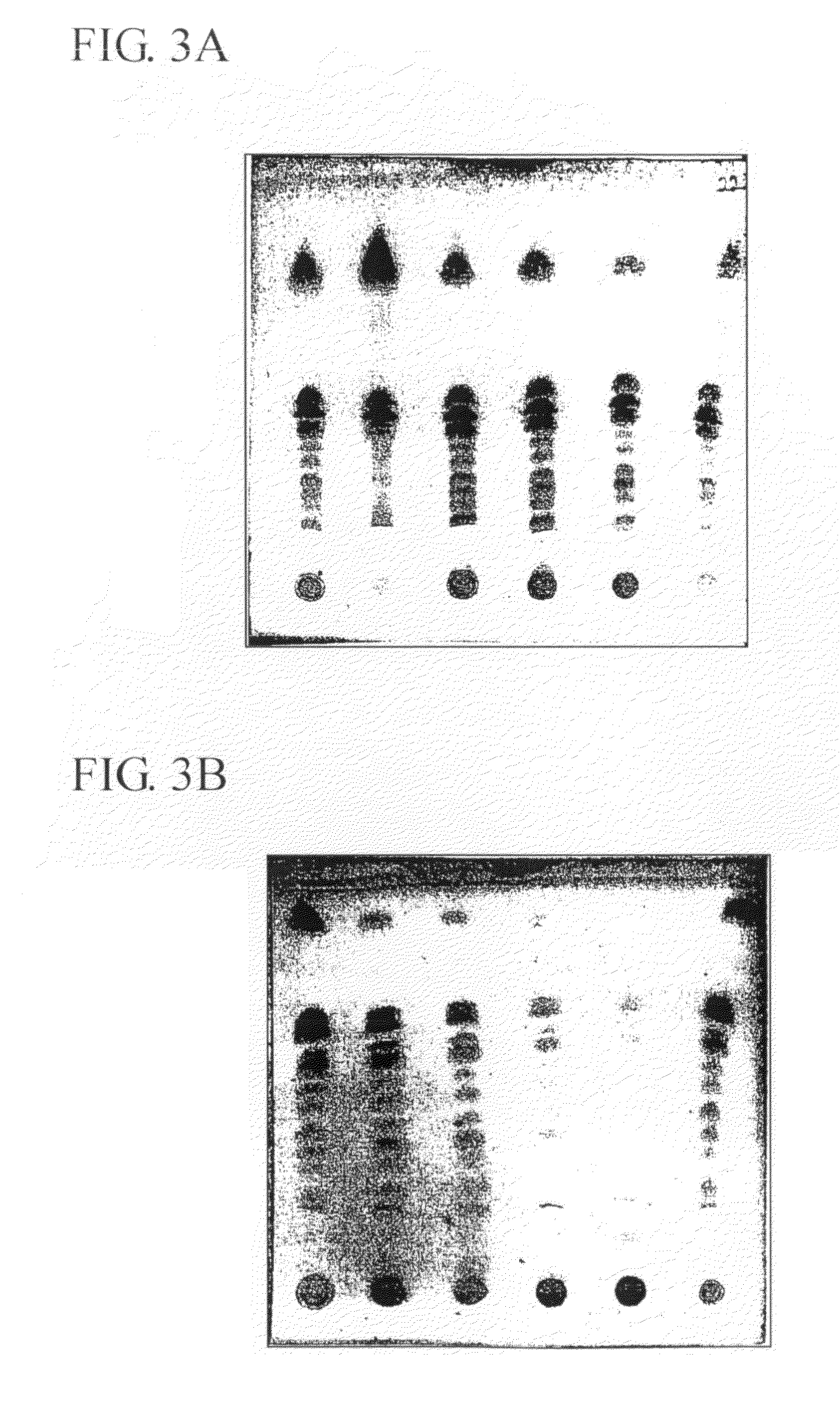Mono- and disaccharide derivatives
a technology of monosaccharide and disaccharide, which is applied in the field of monosaccharide derivatives and disaccharide derivatives, can solve the problems of only weak, if any, stimulating effects, and complex preparation, and achieve the effects of improving the bioavailability, bioactivity and stability of the formulation improving the efficacy and/or stability of the vaccine, and improving the bioavailability, bioactivity and stability of the antigenic componen
- Summary
- Abstract
- Description
- Claims
- Application Information
AI Technical Summary
Benefits of technology
Problems solved by technology
Method used
Image
Examples
examples
[0107]Some of the experiments described in the examples below were carried out simultaneously. In order to facilitate comparison, results of selected groups are presented per example. The consequence is that results of the control group(s) are presented in several examples.
example # 1
Example #1
[0108]Sucrose derivatives were synthesized as described previously for the so-called sulpholipo-polysaccharides (Hilgers et al., 1986). Briefly, finely-powdered sucrose Merck) was dried by heating for about 6 h at 90° C. at 3.pyridine (Merck) was added and the reaction mixtures were incubated for about 18 h at room temperature. The pH was adjusted at 7.0 (±0.3) with 4 M NaOH. N-methylpyrrolidinone and pyridine were removed by extensive evaporation (>6 h) at increased temperature (<80° C.), reduced pressure (<10 mbar) and condensation at 4° C., until the weight loss of the residue was less than 0.1 g per 30 min. The quantities of the starting materials employed for the different derivatives are set forth in Table #1.1.
[0109]
TABLE #1.1Dodecanoyl-SucroseSucrosechlorideSO3•pyridineNMPPyridineMolar ratiosderivative(g)(g)(g)(g)(g)L / sucroseS / sucrose(dodecanoyl)7-6.830.70.030.115.87.00.0sucrose(sulphate)1-6.830.73.230.115.87.01.0(dodecanoyl)7-sucrose(dodecanoyl)5-6.821.90.030.115....
example # 2
Example #2
[0116]34.2 g (0.1 mole) anhydrous sucrose (Merck), 149 g (1.5 mole) anhydrous N-methyl-pyrrolidinone and 79 g (1 mole) anhydrous pyridine were fed in a round bottom flask which was then connected to a Rotavapor™ (Buchi, Switzerland) and mixed by rotation. The mixture heated to 90° C., until a clear solution was obtained. The temperature was adjusted at 60° C. and 153.3 g (0.7 mole) dodecanoylchloride were fed to the sucrose solution. The reaction mixture in the flask was kept at 60° C. for 6 hours. 15.9 g (0.1 mole) SO3.pyridine were fed to the reaction mixture in the flask and the reaction mixture was kept at 60° C. for 6 hours and then at ambient temperature for 12 hours. The reaction mixture was kept for 24 hours at 4° C., which resulted in the formation of a crystalline precipitate and two liquid phases. The upper phase was collected and solvents were removed by evaporation at increased temperature (<60° C.), reduced pressure (<10 mbar) and condensation at 4° C. on the...
PUM
| Property | Measurement | Unit |
|---|---|---|
| temperature | aaaaa | aaaaa |
| temperature | aaaaa | aaaaa |
| temperature | aaaaa | aaaaa |
Abstract
Description
Claims
Application Information
 Login to View More
Login to View More - R&D
- Intellectual Property
- Life Sciences
- Materials
- Tech Scout
- Unparalleled Data Quality
- Higher Quality Content
- 60% Fewer Hallucinations
Browse by: Latest US Patents, China's latest patents, Technical Efficacy Thesaurus, Application Domain, Technology Topic, Popular Technical Reports.
© 2025 PatSnap. All rights reserved.Legal|Privacy policy|Modern Slavery Act Transparency Statement|Sitemap|About US| Contact US: help@patsnap.com



